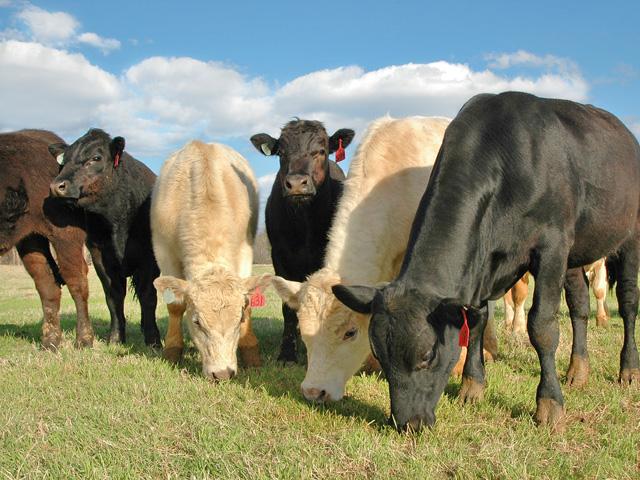Zero Out the N
How to Manage Your Herd's Grazing When You Skip Nitrogen Applications on Pastures
Skyrocketing fertilizer and fuel prices will take more than the normal bite out of the cost of raising cattle this year. But it's not the first time Monte Rouquette has seen this kind of pressure.
Rouquette is a forage physiologist at Texas A&M's College of Agriculture and Life Sciences. He says the energy crisis of years past "was just an appetizer" compared to what cattle producers are seeing today in their forage production operations.
"They have experienced increased prices in fuel, fertilizers and feed ingredients, and now the costs of doing business have caused many to rethink their operating strategies," he reported.
Top of mind for many producers right now is the cost of nitrogen and whether to put out a spring application. Rouquette says these decisions must be "zip-code specific." In addition, he noted, "Concurrent, critical decisions must be made for the class of beef cattle used, their efficiency of production and returns based on pasture occupancy and weight of the animals."
Stocking rate adjustments, says Rouquette, will dictate requirements for fertilizer, hay and any supplemental feed needed to meet performance expectations.
"For cow-calf producers, wintering costs associated with hay and supplements needed to maintain cow condition for calving and rebreeding are responsible for a substantial part of the 12-month cow costs. Thus, fertilizer management during the summer months, hay production or purchase, and inclusion of winter annual pastures require primary consideration during times of escalating input prices."
P[L1] D[0x0] M[300x250] OOP[F] ADUNIT[] T[]
For operators who choose to eliminate fertilizers for now, there is a long-term research project at Texas A&M that looks at management strategies tied to that. Key takeaways include:
1. Get a soil test when eliminating all fertilizer. If levels are acceptable for overseeding of clovers, that can help with late-winter and early spring grazing. Those grazed clovers will become a source of nitrogen, and the nutrients will be available for use by bermudagrass and other warm-season forages. This recycling of nutrients stimulates forage production and reduces "soil mining" effects.
2. Reduce stocking rates or lease additional pasture to offset the reduced forage production.
3. Meet hay requirements by purchasing hay, basing purchases on the nutritive value and weight of the hay. If the pasture includes clovers, however, by letting the clovers set seed and harvesting for hay after seed maturation, you can provide some hay needs. Those clover seed hay bales will reseed pasture, especially when unrolling them onto new seeding areas in the fall.
4. Supplement if required during the winter, depending on hay nutritional values and/or standing hay values.
5. Time of calving may be adjusted to fit in with seasonal availability of forage nutrients and dry matter from pasture and/or hay. If there are no winter annual forages as components of the pasture system, late-spring calving may be the best fit without requiring prolonged supplementation.
6. Mow pastures, or apply herbicides, to control annual weeds and perennial woody species that will invade pastures.
7. Bahiagrass and common bermudagrass will initially dominate with an extended absence of nitrogen fertilizer. Subsequent invasion by other annual and perennial grasses may become more predominant over time.
The study also looks at outcomes and strategies when reducing fertilizer and using moderate fertilization. The entire report can be found here: https://agrilife.org/….
VOLATILITY CONTINUES IN FERTILIZER MARKETS
DTN Staff Reporter Russ Quinn follows global news and analysis for fertilizer markets, and he says the situation will continue to be highly volatile moving through the summer. A lot of that volatility is tied to the Russia-Ukraine War.
He reported that Russia is the second-largest producer of ammonia, urea and potash and the fifth-largest producer of processed phosphates. The country accounts for 23% of the global ammonia export market, 14% of urea, 21% of potash and 10% of processed phosphates. The Fertilizer Institute reported that removing Russian fertilizer production from the global marketplace would have a measurable impact on supply.
North America imports about 20% of its urea from Russia. It is expected that China will reenter the trading market for urea and phosphates in the second half of the year, which could ease some price pressures.
To read Russ' full report: "Russia-Ukraine Conflict Adds More Pressure to World Fertilizer Market," follow this link: https://www.dtnpf.com/….
(c) Copyright 2022 DTN, LLC. All rights reserved.





